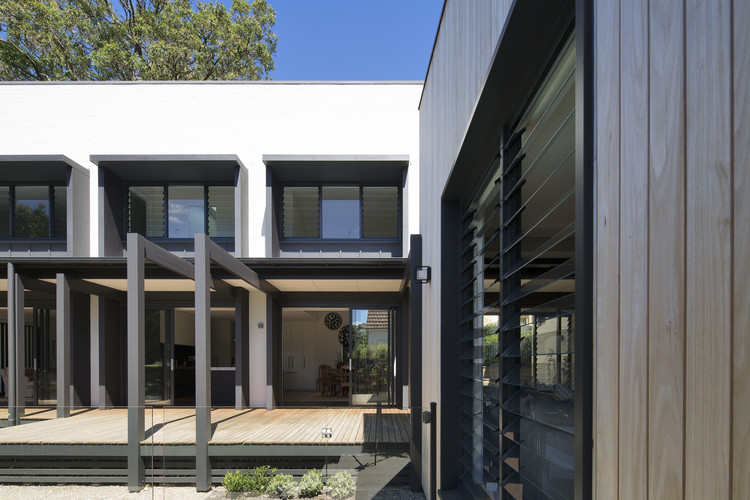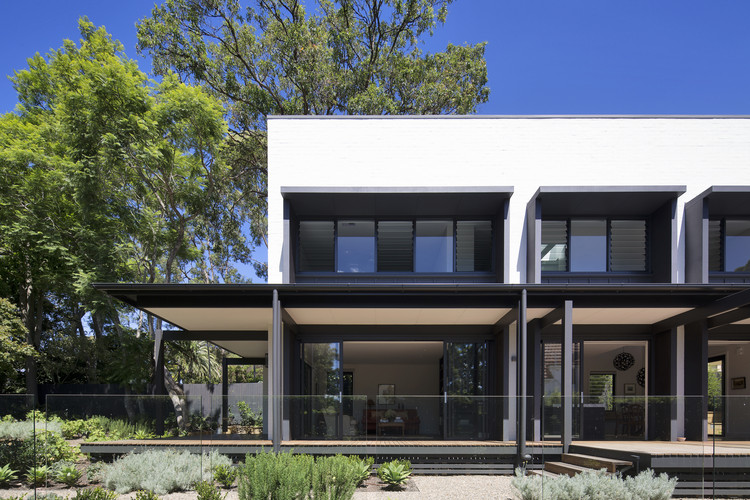
-
Architects: James Design Studio
- Area: 280 m²
- Year: 2018
-
Photographs:Simon Whitbread
-
Manufacturers: GRAPHISOFT, Fisher & Paykel, ARC PANEL, David Trubridge, K&K Shopfitters, KWC, Oliveri, Studio Italia Design - Lodes
-
Lead Architects: Jonathan James (James Design Studio)

Text description provided by the architects. A new house in the suburbs of Sydney’s upper north shore using vernacular forms and simple gables defined by differing materials with a link in the middle giving a glimpse of what lies beyond while providing a framework for privacy. The plan wraps around landscaped courtyards connecting internal spaces that engage with the outdoors. Located in a leafy suburban area surrounded by simple post-war cottages, the architects found it very important to design a house which was contemporary in nature but did not stand out obnoxiously amongst its more traditional neighbors.



The shape of the design was born from the concept of creating a simple gable form which was to be split down the middle and divide in two. These two separate forms were to be joined with a single story glazed walkway. From the street, onlookers would be able to, through this walkway, glimpse the more contemporary forms beyond. Located on a long, skinny lot, the architects used this opportunity to take advantage of the site’s north-northwesterly orientation. The layout and footprint of the house were born from passive design principles.

The main living areas were to face this orientation with large amounts of glazing inviting the desirable northern winter sun to enter. Carefully calculated overhanging awning roofs to the ground and first-floor windows were designed to block out any undesirable, summer sun. Small blade walls were to surround these glazed openings and block the western sun in the summer months. Through these glazed elements, at the ground floor, the internal spaces give out onto the long north facing deck which overlooks the pool and provides a strong connection to the garden.



Additional to the abovementioned passive design considerations, photovoltaic panels and rainwater tanks were installed out of sight, sized to meet the client’s everyday requirements. The contrasting textural palette of the house’s exterior was fundamental to the success of the finished design. The 3 main finishes were to be painted brick, raw timber, and glass. The brickwork is reflective of the surrounding suburban homes which are primarily faced brick in appearance. The raw timber finish reflects the tall gums which predominate, giving the neighborhood its unique and distinctive character.























